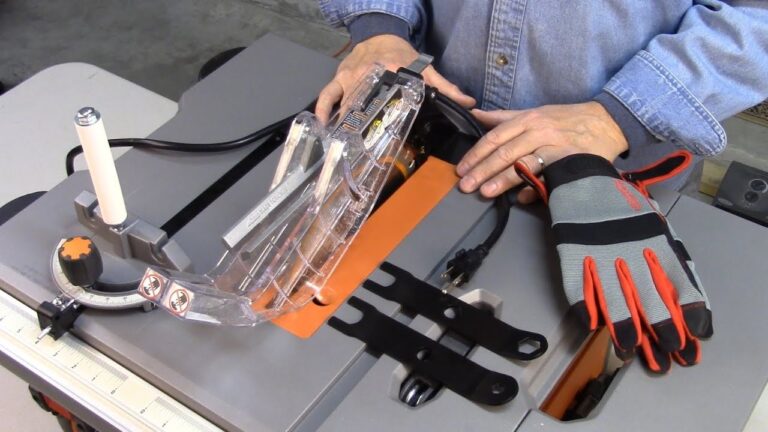Can Sofas Be Recycled?
When considering the sustainability of furniture, it can be difficult to know where to begin. As the world moves towards more sustainable practices, the question of ‘can sofas be recycled?’ is increasingly being asked. The answer is yes, with furniture recycling services available to ensure that sofas can be reused and diverted from landfill. Many furniture recycling services will even collect the sofa from a customer’s home and transport it to a recycling facility, making the process much easier and more accessible. With the right approach, sofas can be recycled and reused, helping to reduce the amount of waste that ends up in landfill.
What is Sofa Recycling?
Sofa recycling is becoming increasingly popular in the green movement as a way to reduce the amount of furniture waste that ends up in landfills. With the furniture industry producing over 2.1 million tons of waste each year, it’s more important than ever to find ways to give sofas a second life. But what exactly is sofa recycling, and how does it work?
Sofa recycling involves breaking down a sofa into its component parts and recycling or repurposing the materials. By separating the fabric, foam and other materials, they can be recycled and used in new items. This process not only reduces waste, but also saves energy and resources that would have been used to create a brand new sofa.
The recycling process can vary depending on the type of sofa and materials used. For instance, an older sofa may be more difficult to break down and recycle than a newer one. Additionally, some materials, such as foam, may require specialized techniques to be recycled.
Sofa recycling is an effective way to reduce the amount of furniture waste that ends up in landfills. By breaking down sofas into their component parts and recycling or repurposing the materials, we can give sofas a second life and help to reduce our environmental footprint.
Advantages of Sofa Recycling
In the age of sustainability, it is important to consider the environmental impact of all our purchases, including sofas. Recycling sofas not only prevents them from ending up in landfills, but also provides useful resources to create new furniture and other items. There are numerous advantages that come with sofa recycling, including the following:
1. Reduced Waste: The main benefit of recycling sofas is that it reduces the amount of waste that is sent to landfills. This not only helps the environment, but also saves on resources by preventing the need to build new landfills or expand existing ones.
2. Conservation of Resources: By recycling sofas, we can conserve the resources used to create new furniture. This means that fewer resources such as wood, metal, and other materials have to be harvested or mined.
3. Creates Jobs: Recycling sofas also creates jobs in the recycling industry. This provides employment opportunities for those who might not otherwise have access to decent work.
4. Creates New Products: Recycled sofas can also be used to create new products such as furniture, art, and clothing. This not only reduces waste, but also provides creative opportunities to those who want to make something out of recycled materials.
Recycling sofas has numerous benefits and is an important part of living sustainably. By recycling sofas, we can reduce our environmental impact, conserve resources, create jobs, and make new products from recycled materials.
Disadvantages of Sofa Recycling
Sofa recycling has its drawbacks, as with any other recycling process. One of the primary concerns is cost. Recycling furniture, particularly sofas, is often more expensive than simply disposing of them. This is because of the additional labor and time that goes into disassembling the sofa and sorting out the various materials. Additionally, some of the materials found in sofas may not be suitable for recycling. For instance, foam may be too degraded to be used again, or the metal frames may be too corroded to be recycled.
Another downside to sofa recycling is that it may not always be available in all locations. Many cities and towns do not have facilities to recycle furniture, so you may have to look for a recycling center nearby or even in a neighboring town. Additionally, some of the materials used in the construction of sofas may not be recyclable at all.
Finally, sofa recycling also has environmental implications. Although it does reduce the amount of furniture sent to landfills, it doesn’t necessarily reduce the amount of materials used to build sofas in the first place. This means that the environmental impact of sofa recycling may be minimal compared to other recycling processes.
What Materials are Used to Make Sofas?
Sofas are a staple piece of furniture in most households – they are comfortable, stylish, and can be used for a variety of purposes. But what materials are commonly used to make these beloved pieces? Depending on the type of sofa, the materials used to make them can range from fiberboard and particleboard to steel and wood. More modern sofas may be composed of foam, felt, and synthetic materials. Different fabrics are also used to upholster sofas, such as leather, vinyl, microfiber, and chenille. Each material has its own unique properties and advantages, so it is important to consider these when shopping for a new sofa. For example, leather sofas are known for their durability and are relatively easy to clean, while foam sofas offer a softer, more comfortable seating experience. Ultimately, understanding the materials used to make sofas will help you make an informed decision when shopping for one.

How to Recycle Sofas
As one of the most common, yet bulky, pieces of furniture in our homes, sofas can be difficult to recycle. Fortunately, there are numerous ways to responsibly dispose of and recycle old sofas. Whether you plan to donate, repurpose, or have it picked up by a special disposal service, there are several couch recycling options available.
Donating a sofa is a great way to give a piece of furniture a second life. Charitable organizations like Habitat for Humanity or the Salvation Army will accept gently used couches. Another option is to offer the couch up on a local classifieds platform like Craigslist or NextDoor.
For those looking to repurpose their sofa, there are a variety of solutions. Upholstery shops can assist with reupholstering and replacing cushions to give your sofa a much-needed facelift. Additionally, there are creative ways to turn your old couch into something new, such as a daybed, bench, or even an outdoor garden seat.
Lastly, if you’re unable to donate or repurpose your couch, many local governments offer a bulky item pick-up service. These services usually require that the sofa is properly broken down and wrapped in plastic prior to pickup. Additionally, you can search for local scrap metal buyers, as many will take sofas for recycling.
Ultimately, when it comes to recycling sofas, there are a variety of options available. From donating and repurposing to having it picked up by a special disposal service, it’s possible to give your old sofa a new life and properly dispose of it in a responsible manner.
Where Can I Take my Sofa to be Recycled?
The modern home is filled with furniture, and sofas are a common feature of many households. But what happens to the sofa when its time to replace it? Can it be recycled? The answer is yes! But the process of recycling a sofa can be a bit complex.
The good news is that sofa recycling is becoming more widely available as awareness of the environmental impact of furniture increases. Many local governments now offer curbside pickup for furniture, and some cities even have dedicated furniture recycling centers.
If you’re looking to recycle your sofa, start by checking with your local government to see if they offer furniture recycling services. If they do, then you can simply arrange for pickup and have the sofa recycled in the proper manner. If not, you can look for a private recycling center that specializes in furniture.
Recycling your sofa is a great way to help reduce furniture waste and keep usable materials out of landfills. Not only does it help the environment, but it also helps the economy by creating jobs and providing a new life for old furniture. So, if you’re looking to get rid of your old sofa, look into recycling it. You’ll be glad you did!
What Are the Benefits of Sofa Recycling?
As more people become aware of the environmental and economic benefits of recycling, the process of recycling furniture has become increasingly popular. Recycling sofas has become one of the most sought-after form of furniture recycling, as it can help reduce the amount of waste in landfills and provide an affordable alternative to purchasing new sofas. There are many benefits to sofa recycling, such as cost savings, environmental sustainability, and creative reuse.
When sofa recycling is done correctly, it can save money by reducing the need to purchase new furniture. Upcycling old materials and components can often result in a unique piece that could cost more if purchased new. This cost savings can be beneficial for both individuals and businesses who are looking to save money while avoiding wasteful spending.
In addition to cost savings, sofa recycling can also help reduce the amount of waste in landfills. It is estimated that more than 92% of sofas end up in landfills when they are discarded, making sofa recycling a great way to reduce waste and promote environmental sustainability. By recycling sofas, materials such as steel, foam, and fabric can be reused in new products, which can help reduce the amount of waste created.
Finally, sofa recycling can also be a great way to get creative with furniture. By taking apart existing furniture and reusing components in a new design, individuals and businesses can create unique, one-of-a-kind pieces that can be used in their homes or businesses. This creative reuse can help reduce the amount of new furniture purchased while still providing a stylish and functional piece of furniture.
All in all, sofa recycling can be a great way to save money, reduce waste, and get creative with furniture. By taking advantage of the many benefits of sofa recycling, individuals and businesses can enjoy the cost savings and environmental sustainability that come with this process.
Challenges of Sofa Recycling
Sofas are bulky and difficult to dispose of, and recycling them is often not an option. This is due to the complex nature of the sofa construction. Sofas are made up of a combination of materials, including wood, metal, foam, fabric, and springs, which makes them difficult to break down and reuse. As a result, it is challenging to recycle the various components of a sofa.
Moreover, the process of disassembling a sofa is time-consuming and labor-intensive. This means that it is not cost-effective for companies to recycle old sofas. Furthermore, due to the size and weight of sofas, it can be difficult and expensive to transport them to a recycling facility.
The good news is that there are organizations and companies that specialize in recycling sofas. They have the necessary machinery and personnel to disassemble and recycle the components of sofas. Additionally, charities and nonprofits often accept donations of old sofas that are still in good condition, and these sofas are then donated to those in need.
Overall, recycling sofas is possible, but it is a challenging process. Companies and organizations that are dedicated to recycling sofas have made it easier to do so, but the process is still expensive and time-consuming. It is important to consider other options for disposing of an old sofa before attempting to recycle it.
FAQs About the Can Sofas Be Recycled?
1. Can sofas be recycled?
Yes, sofas can be recycled. Depending on the type of fabric, foam, and frame, sofas can be recycled into new products such as furniture components, automotive parts, and insulation.
2. What kind of materials can be recycled from sofas?
Fabrics, foam, and frames are the primary materials that can be recycled from sofas. In addition, some metal components, such as springs and support systems, can also be recycled.
3. Are there any companies that specialize in recycling sofas?
Yes, there are several companies that specialize in recycling sofas. These companies are experts in breaking down and repurposing sofas, so they are the best option for people looking to recycle their furniture.
Conclusion
Yes, sofas can be recycled. The process isn’t as straightforward as other materials like plastic or glass, but it is possible. The best way to recycle a sofa is to donate it to a charity or organization that specializes in collecting and refurbishing furniture for reuse. If the sofa is too damaged to be donated, many local waste management companies have programs dedicated to furniture recycling. Additionally, some companies offer pick-up services to make it easier to dispose of the item. By recycling an old sofa, you can help reduce waste and ensure the materials are repurposed in a responsible way.






